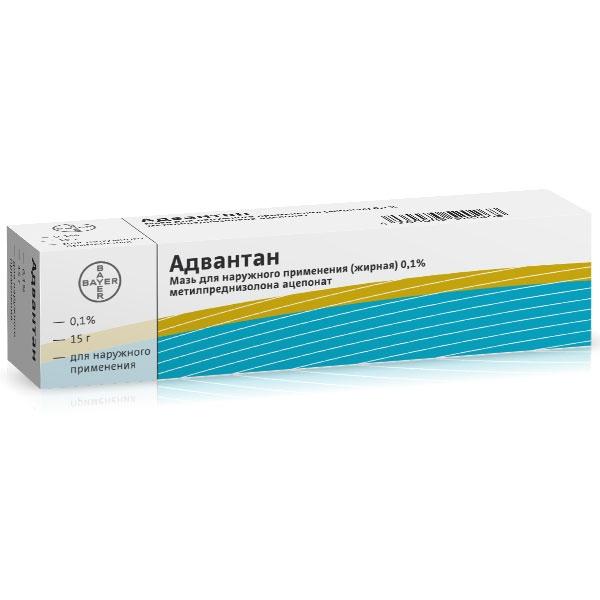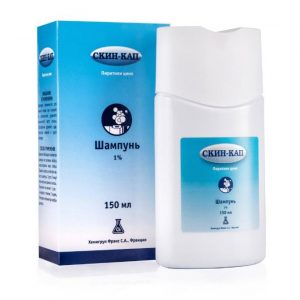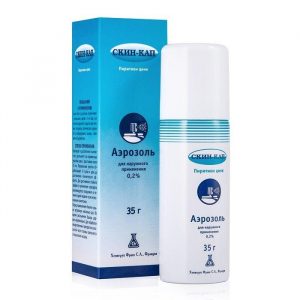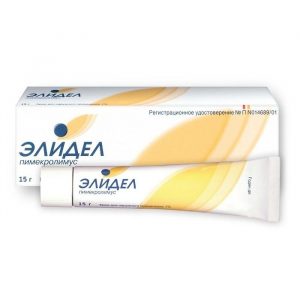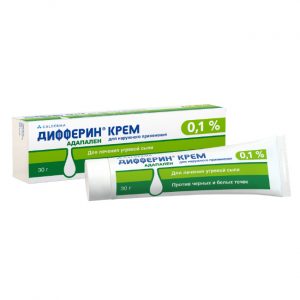Description
Release form
Ointment 0.1% oily
Pharmacological action of
corticosteroids for external use, is a non-halogenated synthetic steroid. When used externally, Advantan suppresses inflammatory and allergic skin reactions, as well as reactions associated with increased proliferation, which leads to a decrease in objective symptoms (erythema, edema, lichenification) and subjective sensations (itching, irritation, pain).
When using methylprednisolone aceponate externally, the systemic effect is minimally expressed in both humans and animals. After repeated application of Advantan to large surfaces (40-60% of the skin surface), as well as when applied under an occlusive dressing, there is no adrenal gland dysfunction: the level of cortisol in the blood plasma and its circadian rhythm remain within normal limits, the level of cortisol in the daily urine does not decrease going on.
During clinical trials with the use of Advantan in the form of ointment, cream, oily ointments or emulsions up to 12 weeks in adults and up to 4 weeks in children (including young children) did not reveal the development of skin atrophy, telangiectasias, striae, and acne-like rashes.
Methylprednisolone aceponate (especially its main metabolite, 6β-methylprednisolone-17-propionate) binds to intracellular glucocorticoid receptors. The steroid-receptor complex binds to certain sections of DNA, thus causing a series of biological effects.
In particular, the binding of the steroid-receptor complex to DNA leads to the induction of macrocortin synthesis. Macrocortin inhibits the release of arachidonic acid and, thus, the formation of an inflammatory mediator such as prostaglandins and leukotrienes.
Inhibition of GCS synthesis of vasodilating prostaglandins and potentiation of the vasoconstrictor action of adrenaline leads to a vasoconstrictor effect. Its complex with DNA leads to the induction of macrocortin synthesis. Macrocortin inhibits the release of arachidonic acid and, thus, the formation of an inflammatory mediator such as prostaglandins and leukotrienes.
Inhibition of GCS synthesis of vasodilating prostaglandins and potentiation of the vasoconstrictor action of adrenaline leads to a vasoconstrictor effect.
Indications
Inflammatory skin diseases that are sensitive to therapy with topical corticosteroids:
– atopic dermatitis, atopic dermatitis, childhood eczema
– true eczema
– microbial eczema
– occupational eczema
– dyshidrotic eczema
– simple contact dermatitis
– allergic (contact) dermatitis.
Use during pregnancy and lactation
If you need to use the drug Advantan during pregnancy and lactation, you should carefully weigh the expected benefits of therapy for the mother and the potential risk to the fetus or infant.
In this category of patients, it is not recommended to use the drug for a long time on extensive skin surfaces.
Nursing mothers should not apply the drug to the mammary glands.
Special instructions
In the presence of bacterial dermatoses and / or dermatomycoses, in addition to Advantan therapy, specific antibacterial or antifungal treatment is necessary.
Avoid contact with eyes.
As with systemic corticosteroids, topical corticosteroids may cause glaucoma (for example, after high doses or for very long periods, using occlusive dressings or applying to the skin around the eyes).
Influence on the ability to drive vehicles and operate machinery
Does not affect the ability to drive vehicles and operate machinery.
Composition of
1 g of ointment contains:
Active ingredient:
methylprednisolone aceponate 1 mg.
Excipients:
white soft paraffin – 425 mg,
liquid paraffin – 394 mg, microcrystalline
microcrystalline wax – 150 mg,
hydrogenated castor oil – 30 mg.
Dosage and administration
The drug is applied 1 time / day with a thin layer on the affected skin.
The continuous daily use of Advantan in the form of a ointment is for adults no more than 12 weeks, for children no more than 4 weeks.
Fat ointment is indicated for the treatment of processes with very dry skin and chronic skin diseases at the stages when an anhydrous dosage form of the drug is needed. The occlusive effect of oily ointment provides a pronounced therapeutic effect.
Side effects
Typically, the drug is well tolerated.
Very rarely (in less than 0.01% of cases) local reactions such as itching, burning, erythema, and the formation of a vesicular rash can be observed.
If the drug is used for more than 4 weeks and / or on an area of 10% or more of the body surface, the following reactions may occur: skin atrophy, telangiectasia, striae, acneform skin changes, systemic effects due to corticosteroid absorption.
In clinical trials, none of the above side effects were observed with Advantan before 12 weeks in adults and up to 4 weeks in children.
In rare cases (0.01-0.1%), folliculitis, hypertrichosis, perioral dermatitis, skin depigmentation, allergic reactions to one of the components of the drug can be observed.
Drug Interactions
Drug Interactions Advantan not described.
Overdose
In the study of the acute toxicity of methylprednisolone aceponate, no risk of acute intoxication was observed in the case of excessive single external use (application of the drug to a large area under conditions favorable for absorption).
Symptoms: Skin atrophy (thinning of the skin, telangiectasia, stretch marks) can develop with excessively long and / or intensive topical application of ACS.
Treatment: Withdrawal.
Storage Conditions
The product should be stored at a temperature not exceeding 30 ° C.
Keep out of the reach and sight of children.
Shelf life
5 years.
Deystvuyushtee substance
methylprednisolone aceponate
Prescription conditions from
pharmacies Without prescription
dosage form
ointment
Appointment Appointment
lactating mothers on prescription, For pregnant women prescribed by a doctor, Children over 4 months old, Adults
Bayer Pharma AG, Germany
